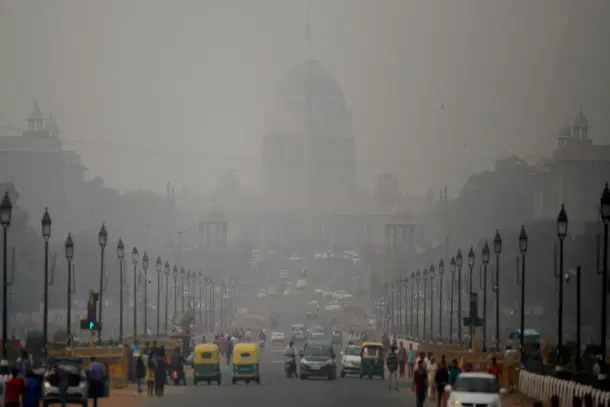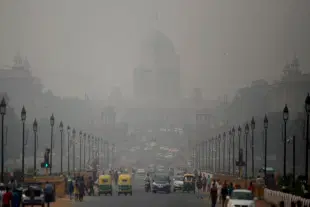News Headlines
Delhi: Thick Smog Engulfs National Capital Post-Diwali Celebrations As Air Quality Deteriorates Again
Swarajya Staff
Nov 13, 2023, 09:07 AM | Updated 09:07 AM IST
Save & read from anywhere!
Bookmark stories for easy access on any device or the Swarajya app.


Following Diwali night, a dense smog shrouded the national capital due to pollution caused by the bursting of crackers, exacerbating the city's already worsening air quality.
According to the Central Pollution Control Board (CPCB) data, the average AQI was around 300 at most places.
The PM2.5 and PM10 pollutant levels touched 500 at most places during the day, including in Rohini, ITO, and Delhi airport area, NDTV reported.
Air quality index is an indicator to measure air pollution. An AQI between zero and 50 is considered 'good', 51 and 100 'satisfactory', 101 and 200 'moderate', 201 and 300 'poor', 301 and 400 'very poor', 401 and 450 'severe' and above 450 'severe plus'.
It should be noted that the national capital has been grappling with pollution issues for several weeks now.
Delhi, where the air quality ranks among the worst in the world's capital cities, was cloaked in a thick blanket of smog with severe pollution levels for a week since 28 October.
In view of the rising pollution, the state government had to shut schools and ban diesel trucks in view of the pollution, though it stopped short of enforcing the odd-even rule.
However, light rainfall late last week reduced the reduced the contribution of smoke from stubble burning in Punjab and Haryana to Delhi's air pollution, resulting in marginal improvement in the air quality in the national capital.
Earlier on Sunday (12 November), Delhi recorded its best Diwali day air quality in eight years with clear skies and abundant sunshine.
The AQI stood at 218 at 4 pm on Sunday, the best in at least three weeks, with rains last week bringing about a slight improvement just ahead of the festival of lights.





